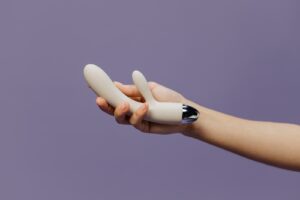Sperm can survive outside of the body for a few minutes to a few days, depending on the environment and container. The temperature and amount of semen ejaculated also affect the survival rate.
In order to become pregnant, sperm must be deposited in the female reproductive tract. The chance of this happening after sperm is released on the skin or in a bath is very low.
Temperature
The temperature in which sperm are exposed has a significant impact on how long they can live outside the body. They need a warm environment that is close to their body’s temperature in order to survive. If they are exposed to a cold environment, they will die. They also need a moist environment. If they are exposed to a dry environment, they will die.
The amount of time a sperm can survive in a container depends on the temperature, the amount of moisture, and the type of container. For example, sperm can live in a sample cup for up to 72 hours, but they cannot survive on skin or in the air. In order to survive, sperm must be in contact with seminal fluid.
In a woman’s body, sperm can survive for up to five days in the sperm-friendly cervical mucus. However, this is not the case in all women. In fact, sperm can only survive for about an hour outside the body in a liquid environment, such as a shower. After that, they can no longer fertilize an egg.
In addition, if sperm are exposed to air, they will begin to dry out quickly. This is why it is important to use a semen storage cup. This will keep the sperm moist and help them to stay active.
Moisture
Sperm can survive on skin for up to an hour, but they die as soon as they dry. This means that they cannot cause pregnancy, even if they find their way to the female reproductive tract, until they are wet again. The same goes for clothes, and surfaces such as toilets or showers.
Generally speaking, semen tends to thrive in a wet environment. The amount of water in a man’s semen depends on fertility factors and the initial health of the sperm.
In addition, the temperature of the semen is also important. Sperm is highly sensitive to changes in temperature, and extreme heat can damage or kill them. This is why it is best to store the semen in a cooler place where the temperature stays constant.
For instance, if you put a smear of semen on a glass lab slide at 98.6 degrees, it will dry in about 25 to 30 minutes. However, a similar smear on the skin would take longer to dry due to its higher skin temperature and moisture content.
Generally, semen can live for up to an hour on skin near the genitals and on clothes. Sperm is less likely to survive on hard surfaces such as a toilet seat or bed sheets, but the exact time frame depends on the surface’s temperature and its moisture content.
Air
Sperm are fragile. They need warmth, moisture, and an environment that will not dry them out too quickly. Sperm that lands on a dry surface will die quickly, especially if the surface is hot. This is why it’s important to use a container with a lid that will keep out air and other contaminants.
When a man gets sexually aroused, millions of sperm mix with seminal fluid to create semen. This semen is then released through the vas deferens into the urethra for ejaculation. Most sperm that reach the female reproductive tract die within 24 hours of being ejaculated, since they can’t survive in the cervical fluid or uterus.
Fortunately, sperm can be kept alive for some time if they’re collected immediately after ejaculation. It takes between 42 and 76 days for sperm to mature, but once they’re mature, they live in “storage” inside the testicles (specifically the cauda epididymis) until they’re needed for fertilization.
In fact, sperm that’s been ejaculated can still be fertilized up to five days later when it’s collected from the testicles in a sterile container at body temperature. However, if it’s exposed to room temperature air on clothing, bed linens, or toilet seats, sperm lose their motility rapidly and typically die within an hour. This is why it’s critical to use a sterile container for collecting semen after sex.
Container
Sperm cells can only survive on a surface for a short amount of time before they lose their motility. Once this happens, they can no longer fertilize an egg. This is why it is important to collect sperm cells quickly after sex, and to store them in a sterile cup or container.
The type of container that sperm is stored in also impacts how long they can live outside the body. For example, a glass cup is the best option because it can keep sperm moist and prevent them from drying out. However, other types of containers can also work if the conditions are right.
When it comes to sperm, the environment in which they are located is the most crucial factor. For instance, sperm that is ejaculated from the testicles and deposited in the vagina can survive for up to five days because of the liquid in the woman’s reproductive tract. In contrast, sperm that is ejaculated onto the skin or on dry surfaces like clothing, bedsheets, or toilet seats die within about an hour. However, if semen is collected and frozen, it can remain alive for decades and still be used to cause pregnancy. For this reason, many men choose to freeze their sperm samples and use them for fertility treatments such as in vitro fertilization.
See Also:






